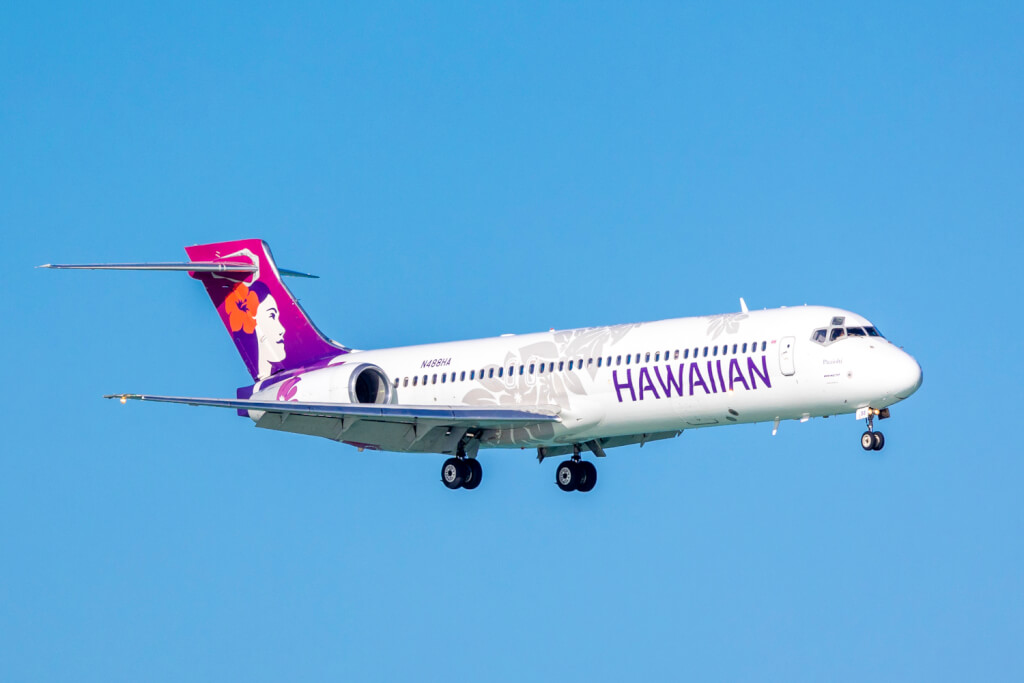I’m not sure why, but a lot of attention has been given to Hawaiian’s impending fleet renewal decision. But as readers know, this is old news – they announced this way back in June. But, whatever. I’m here to give my two cents. This is what Hawaiian should replace the 717 with, in my opinion.
From their previous announcement, we know that Hawaiian is considering the Airbus A220, A319, A320, and Embraer E195-E2 to replace their aging fleet of Boeing 717s, which are technically McDonnell Douglas MD95s. What surprises me, though, is that if they’re considering the A320 family, then why wouldn’t they consider the Boeing 737 MAX? After all, they have a new fleet of Boeing 787s coming online soon.
That’s kind of a moot point, though, as I think the 737 MAX and A320 family aren’t the right choices for this type of operation. But more on that later.
What Hawaiian Should Replace the 717 With
I know why Hawaiian listed the A320 family in its consideration list – commonality. As I covered in my last post, this would be the easiest decision from a logistical standpoint since they have the same type rating as their A321neos, meaning flight crews operating those, as well as maintenance crews servicing them, need minimal additional training to incorporate the aircraft into their fleet. But, to me, this doesn’t negate the issues Hawaiian continues to have with the PW1100G engines and the fact that they’re just too much plane for these routes.
Don’t believe me? Take a look at this comparison graph I completed.
Correction: 717-200 capacity should be 8F+120Y for 128 total passengers.
At 140 passengers in a two-class configuration, with 50% more first class seats than Hawaiian currently has on its 717s, the A319neo would be an enormous step up in capacity compared to the 717’s 106 passengers. That should serve as a red flag, as Hawaiian incorporating the DC-9 into its fleet, alongside Aloha bringing aboard the 737-200, almost caused the demise of both. This is also why the 737 MAX 8 is way too big for the market, as is the E195-E2, in my opinion.
So, that leaves us with the A220. As you can see, it has a similar capacity as the Boeing 717, along with the same seating configuration, far greater MTOW, a huge payload capacity, and far greater range. This is also one of the cheaper options that Hawaiian executives laid out. The problem, though, is that it also utilizes the PW1500G, which is a variant of the A321neo’s PW1100G. It doesn’t experience all of the same problems but does experience premature wear. We also don’t know how these geared turbofans will fare in Hawaiian’s hot, salt, humid, high-cycle operations. Can they withstand the abuse?
But the A220 also weighs over 10,000 lbs more. That means, off the bat, the aircraft already burns more fuel to get up to cruising altitude. And on a flight that has virtually no cruise (where fuel savings actually happen) time – Honolulu to Kahului – how much of a difference will the more efficient turbines actually make? Will their (likely) increased maintenance needs be offset by the theoretical fuel savings?
As I’ve posited long ago, what Hawaiian should replace the 717 with is probably the older Embraer E195. After all, it has a lot of similar specs as the 717, better performance, and higher efficiency, with an engine that may better cope with Hawaiian’s operational tempo. Not only that, but the aircraft is light, an important consideration when you’re constantly taking off and landing. But that’s not on the table.
Final Thoughts
At the end of the day, what Hawaiian should replace the 717 with is up to them, and our opinions don’t matter. But it is fun to speculate, isn’t it? What do you think? In your opinion, what should Hawaiian replace the 717 with?
For what it’s worth, Qantas recently announced that they’d be replacing their Boeing 717s with the Airbus A220.


